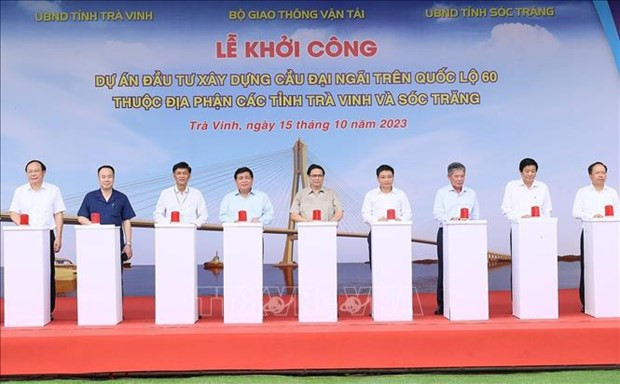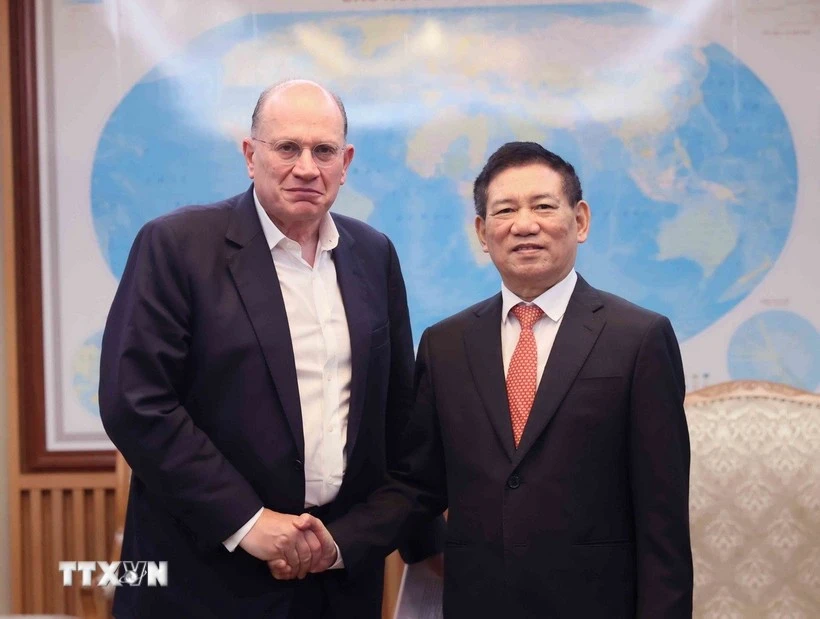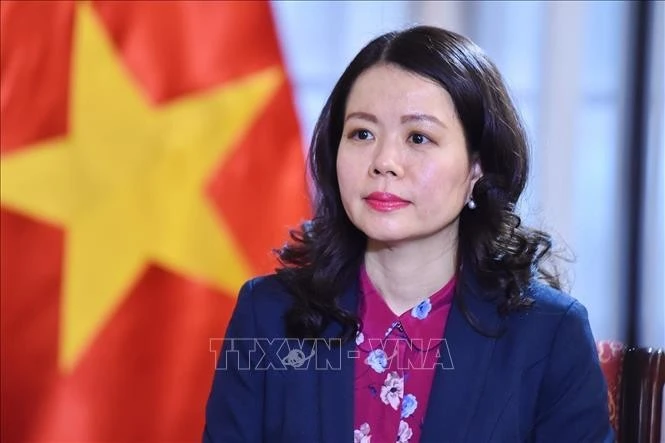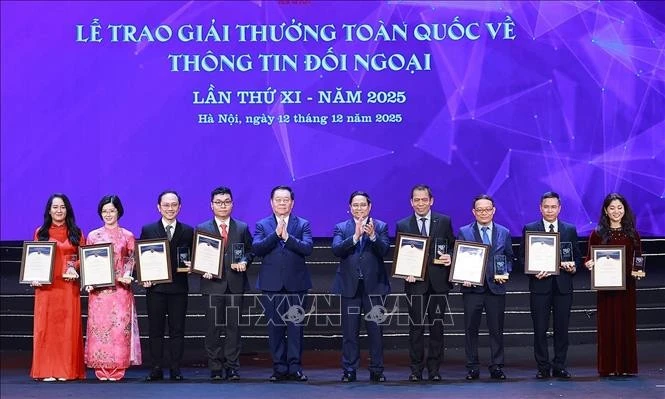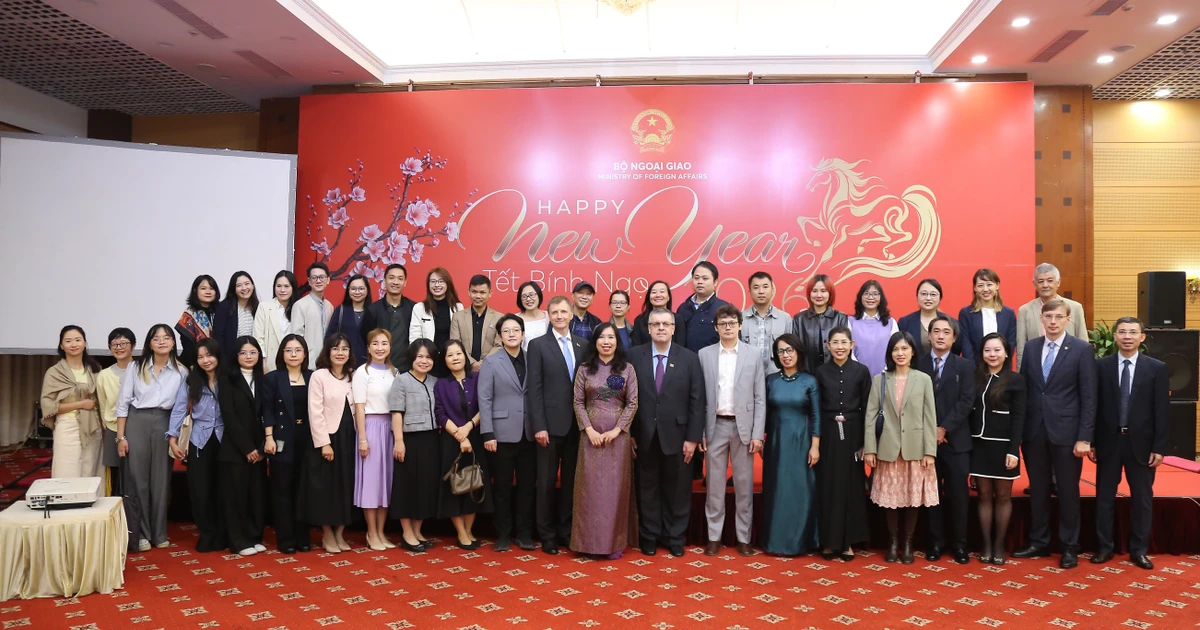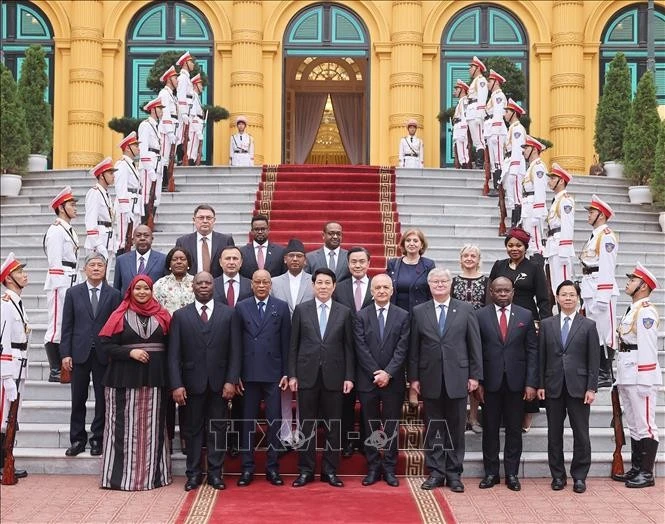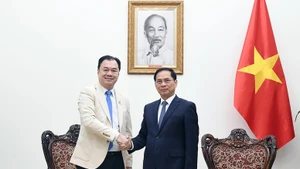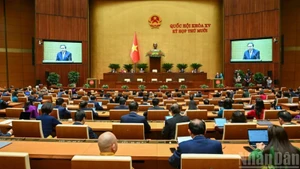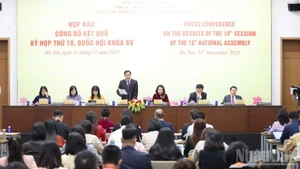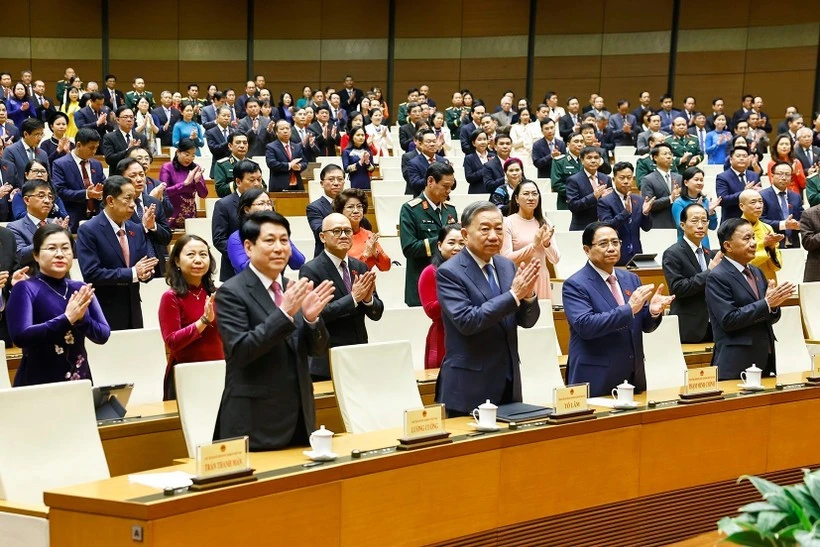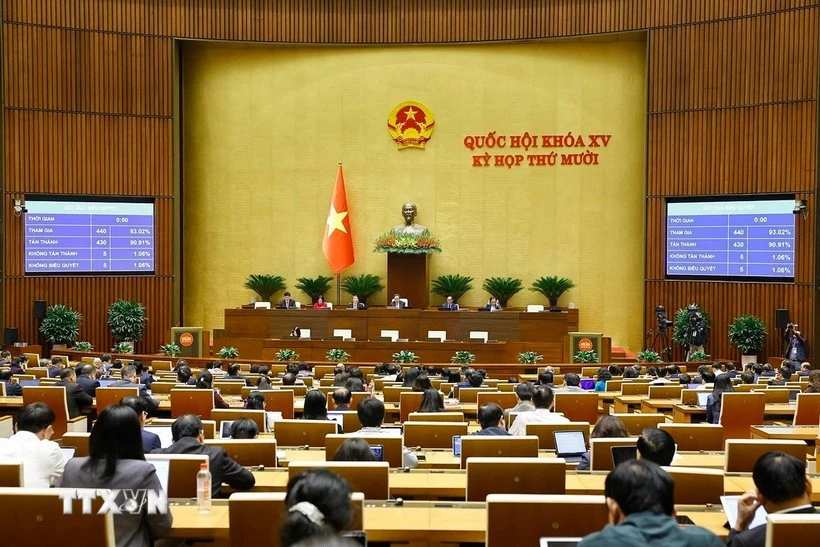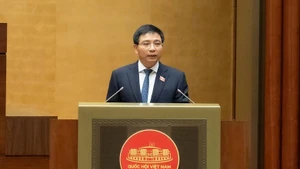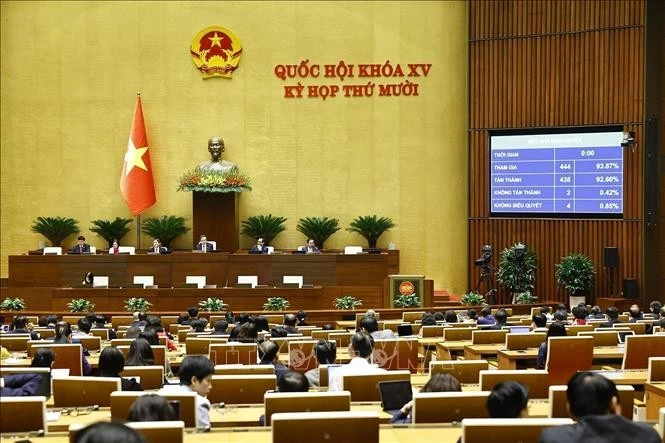Costing 8 trillion VND (327.4 million USD) sourced from the State budget, Dai Ngai Bridge stretches over 15 km long on National Route 60, including leading roads.
Set for completion in 2026, the bridge will replace the last two ferries on National Route 60, helping shorten the travel time between the two localities, and from Ca Mau, Soc Trang, and Bac Lieu provinces to Ho Chi Minh City.
Speaking at the function, the PM stressed three strategic breakthroughs set at the 13th National Party Congress, one of which is infrastructure, notably transport infrastructure, saying since the beginning of the 13th-tenure, the Party and the State have allocated nearly 100 trillion VND to transport projects.
As the Mekong Delta region has a strategic role, resolutions adopted by the Politburo, the NA and the Government have emphasised transport infrastructure development in the Mekong Delta, covering all road, inland waterway, sea, aviation railway services, he said, adding that the Dai Ngai Bridge project forms part of the master plan on road network in the 2021-2030 period with a vision towards 2050.
On October 14 evening, Chinh attended a ceremony announcing Tra Vinh’s master plan for 2021-2030 with a vision towards 2050, approved by the PM on October 2.
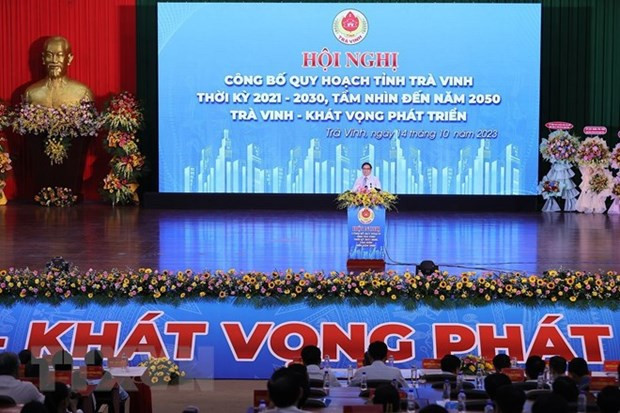 |
| At the ceremony to announce Tra Vinh’s master plan for 2021-2030. (Photo: VNA) |
Under the scheme, Tra Vinh is envisioned to be among the leading localities in the Mekong Delta by 2030, with a uniform infrastructure system connected with other localities in the region and nationwide.
Notably, the Dinh An economic zone is set to serve as an economic engine of the province and the region at large. Tra Vinh will prioritise such sectors as renewable energy, agricultural and aquatic processing, shipbuilding and support industries, high-tech aquaculture, services and tourism with products linked with seaports and logistics.
In his remarks, the PM highlighted Tra Vinh’s strategic location in terms of economy, and national defence and security, and its potential and strengths for socio-economic development. He commended the locality for its outstanding socio-economic achievements, including a GRDP growth of 8.51% in the first nine months of this year.
The master plan will create new development spaces and promote sustainable development of sectors, helping the province maximise its potential and strengths, he said.
For the implementation of the scheme, the Government leader asked Tra Vinh to form major development axes and gateways, especially the axes along coastal roads, National Highway 60 and Hong Ngu - Tra Vinh Expressway.
He advised Tra Vinh to optimise local resources, step up public-private partnerships, focus on transport infrastructure development, pay more attention to economic restructuring in tandem with growth model reform, and further streamline administrative procedures.
On this occasion, the PM requested ministries and agencies to closely coordinate with Tra Vinh to implement the master plan, ensuring that its implementation is aligned with the process of the national socio-economic development strategy for 2021-2030.
